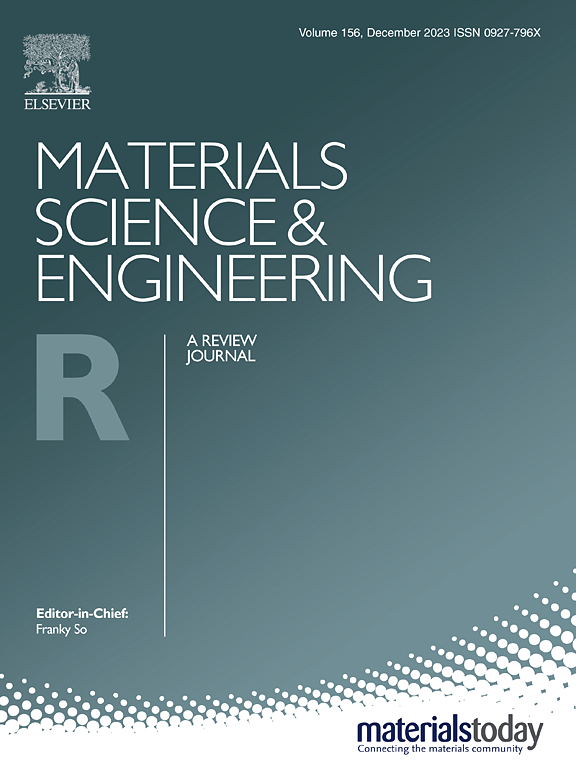基于材料基因组法的增材制造IN738LC高温合金蠕变行为研究
IF 31.6
1区 材料科学
Q1 MATERIALS SCIENCE, MULTIDISCIPLINARY
引用次数: 0
摘要
添加剂制造的镍基高温合金IN738LC由于其优异的蠕变性能,在航空航天高温部件中具有巨大的应用潜力。然而,对高温蠕变行为的有限理解阻碍了其工程应用。本研究将材料基因组计划概念与高通量蠕变实验和机器学习相结合,深入了解增材制造镍基高温合金IN738LC的蠕变行为。采用激光粉末床熔合法制备了这种典型的高裂纹倾向合金样品,然后通过液体诱导愈合策略完全消除了打印的微裂纹。在24种蠕变条件下进行了先进的高通量压缩蠕变试验,与现有的ni基、co基和ni - co基高温合金相比,显示出优越的蠕变性能。基于p参数方法和深度学习技术,预测模型与实验数据表现出良好的一致性,从而能够在任何温度和应力条件下预测蠕变行为。显微组织检查揭示了位错与孪晶、晶体缺陷和析出相的复杂相互作用,这些共同支撑了增强的抗蠕变性能。本研究为增材制造IN738LC高温合金的蠕变行为提供了有价值的见解。此外,我们在材料基因组计划框架内建立了一条将高通量蠕变测试与机器学习相结合的途径,用于材料研究。这种方法为构建预测蠕变行为的模型提供了一种有效的方法,并有可能应用于其他材料。本文章由计算机程序翻译,如有差异,请以英文原文为准。
Creep behaviour investigation of additively manufactured IN738LC superalloy based on Materials Genome approach
The additively manufactured Ni-based superalloy IN738LC holds significant potential for applications in aerospace high-temperature components due to its exceptional creep properties. However, a limited understanding of the high-temperature creep behaviour impedes its engineering applications. This research delves into comprehending the creep behaviour of additively manufactured Ni-based superalloy IN738LC by integrating the Materials Genome Initiative concept with high-throughput creep experiments and machine learning. The samples of this typical high cracking tendency alloy are prepared using the laser powder bed fusion process, and then the printed microcracks are entirely eliminated through the liquid-induced healing strategy. Advanced high-throughput compression creep tests are conducted under 24 creep conditions, revealing superior creep performance compared to existing Ni-based, Co-based, and Ni-Co-based superalloys. Based on the P-parameter method and deep learning techniques, predictive models exhibit excellent alignment with experimental data, thereby enabling creep behaviour prediction under any temperature and stress conditions. Microstructural examination has shed light on the complex interactions of dislocations with twin, crystal defects and precipitates, which collectively underpin the enhanced creep resistance. This research has provided valuable insights into the creep behaviour of additively manufactured IN738LC superalloy. Moreover, we have established a pathway integrating high-throughput creep testing with machine learning within the framework of the Materials Genome Initiative for materials investigation. This approach offers an efficient method for constructing models to predict creep behaviour and potentially can be applied to other materials.
求助全文
通过发布文献求助,成功后即可免费获取论文全文。
去求助
来源期刊

Materials Science and Engineering: R: Reports
工程技术-材料科学:综合
CiteScore
60.50
自引率
0.30%
发文量
19
审稿时长
34 days
期刊介绍:
Materials Science & Engineering R: Reports is a journal that covers a wide range of topics in the field of materials science and engineering. It publishes both experimental and theoretical research papers, providing background information and critical assessments on various topics. The journal aims to publish high-quality and novel research papers and reviews.
The subject areas covered by the journal include Materials Science (General), Electronic Materials, Optical Materials, and Magnetic Materials. In addition to regular issues, the journal also publishes special issues on key themes in the field of materials science, including Energy Materials, Materials for Health, Materials Discovery, Innovation for High Value Manufacturing, and Sustainable Materials development.
 求助内容:
求助内容: 应助结果提醒方式:
应助结果提醒方式:


